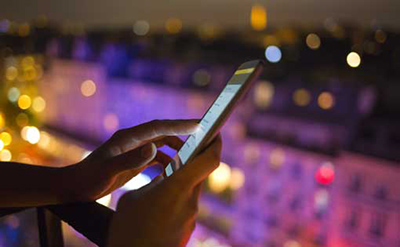


Anyone with access to your accounts or devices with personal information can potentially access your phone, tablet, email, social media, and other accounts. To maintain your privacy, check your settings and change your passwords regularly. In order to secure your accounts, computers, and devices, choose different passwords for every device and online account. Avoid using security questions (for password recovery) that can be easily answered by others.
Technological abuse is any behavior that uses technology (including but not limited to texting, social media, or the Internet) to harass, stalk, intimidate, or cause harm to another person to control them.
Avoid downloading search toolbars since many track your search history, even across accounts. Change your browser settings to manage your privacy and safety, such as blocking cookies and limiting how long your device keeps your browsing history and other data.
While convenient, allowing a device to save your passwords means that you are always connected to accounts that may contain sensitive information. Log out so that others will not be able to access them.
Use a different computer especially when seeking or reaching out for help, including visiting websites that contain advocacy or safety planning resources. Public places such as libraries, community centers, or internet cafes may be safer options than a personal computer at home.
When using a computer in common, partners and others may track your visits to this and other websites. Here’s how you can…
Mobile devices are just as vulnerable as PCs or laptops. The best defense against online threats is having up-to-date security software, web browsers, operating systems, and apps.
Know which apps are on your phone and if you have an unfamiliar app, delete it. Apps are easy to download and could still be accessing your information after you’ve forgotten about them. An unknown app could be a monitoring program that someone installed without your knowledge.
It's not uncommon for someone to be tracked through their smartphone because someone installed a tracking app or service on their phone. If you think this is the case, you can schedule a phone security check at any NYC Family Justice Center. You can also restore your phone to factory settings.
If removing a tracking app or turning off your phone may be dangerous, develop a safety plan that details how to communicate with others until the app can be removed safely, or you’re able to get a new phone.
Using a passcode, strong passwords, or touch ID features to lock your devices will make it harder for someone to access your accounts or install something malicious without your knowledge.
Most phones have a GPS that can pinpoint your location. With this feature turned on, apps can collect and share your location, which may allow someone to track you. Most smartphones give the option of turning off location sharing under “settings.” If you keep this feature turned on, you can choose which apps are allowed to access your location. If you have a smartphone and it’s possible that someone is tracking you, you can turn on airplane mode or turn your phone off completely before visiting a Family Justice Center or another setting where you require safety.
Bluetooth allows your phone to communicate with other devices, such as the hands-free option in your car or your printer. It can also be misused to retrieve your information or intercept your calls. Turn Bluetooth on only when you need to connect with another device. Some phones allow you to set passcodes or additional security levels on your Bluetooth.
Most devices have settings to help you manage your privacy and safety. You can use these controls to limit an app’s access to the data on your device, including your location, pictures, and contacts. You may also be able to block tracking cookies and limit what data your mobile browser collects.
One of the most convenient features of a smartphone is being able to access email or social media accounts quickly. However, this means that you are always connected to accounts that may contain sensitive information, such as your location. Log out of certain accounts so that others will not be able to access them even if they are using your phone.
Even if someone doesn’t have access to your phone, it may be possible for them to access your wireless carrier account. Online accounts can include your call and text logs, email or social media accounts, or Google Play, Apple AppStore, or iCloud accounts. Update your passwords and security questions for those accounts and use different passwords for each to ensure someone else can’t get access.
When you get a new cell phone, don’t import everything from your old phone. Importing all your data may inadvertently install the tracking app on your new phone too.